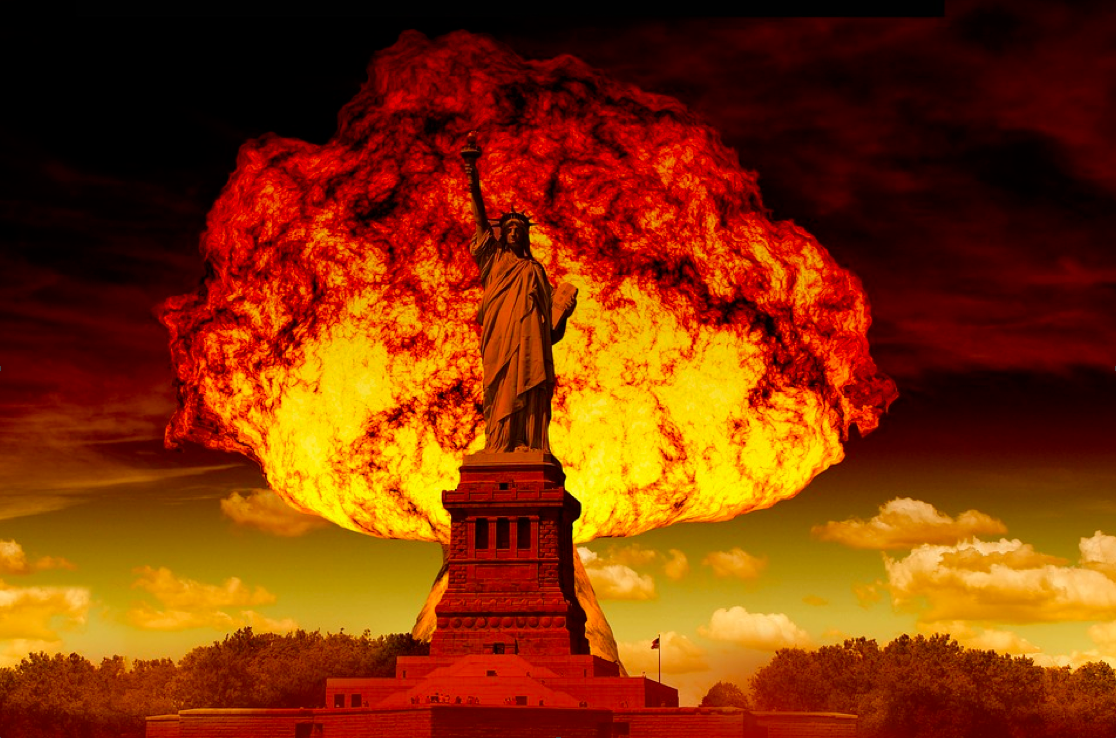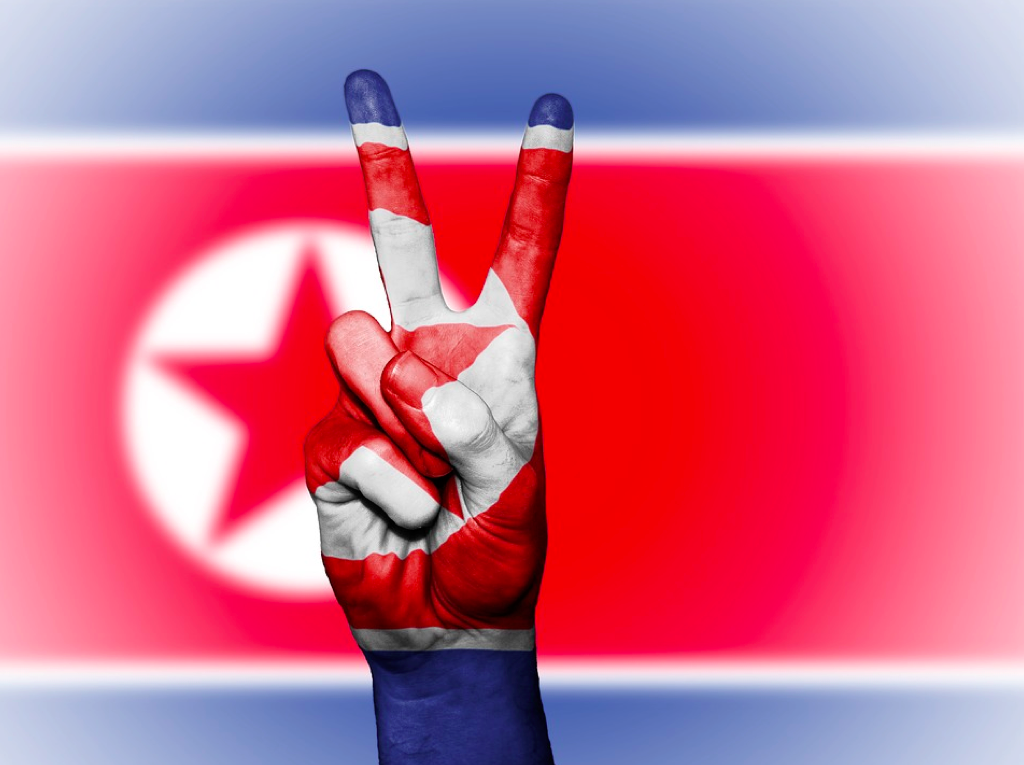During the year North Korea’s 16 missile tests and their impact on relations with South Korea and the United States have dominated news reports on Korean affairs, in spite of the May 9 election of Moon Jae-in as new South Korean president following the Constitutional Court’s decision on March 10 to impeach President Park Geun-hye. The tests have been conducted in violation of UN Security Council resolutions and were condemned by the Council as well as by South Korea, the United States, Japan, China and Russia. Tensions caused by North Korea’s missile and nuclear program have risen during 2017 that is a special year due to the simultaneous changes of president in both the United States and South Korea. In particular, no American president has previously used as harsh word as President Donald Trump against North Korea which no doubt has profoundly irritated Pyongyang.

Photo by Pixabay
Tensions escalated when a North Korean newspaper on August 6 wrote that nuclear action or sanctions taken by the United States against the Democratic People’s Republic of Korea [DPRK] will lead to a “sea of fire” engulfing the American mainland. Two days later tensions reached a peak following President Donald Trump’s statement: “North Korea best not make any more threats to the United States. They will be met with fire and fury like the world has never seen.” Two days later North Korea unveiled a plan to attack Guam with four Hwasong-12 intermediate-range ballistic missiles in mid-August but it was withdrawn on August 15.
The backtrack from repeated threats to strike Guam came one day after China said it will tighten economic pressure on the North by implementing a new package of UN sanctions adopted unanimously by the UN Security Council on August 5. One target was to deprive the DPRK of key sources of export revenue such as all exports of coal, iron, iron ore, lead, lead ore and seafood reducing annual export income by one third. The Chinese government announced a ban on imports of iron ore, iron, lead and coal from North Korea, cutting a critical lifeline to the isolated country.[1] Clearly, China as North Korea’s main ally played a constructive role to reduce tensions. Also, North Korea knows from previous experience that if it would have escalated tensions, a situation difficult to handle could have developed.
Recent developments raise two questions: Have tensions raised risks for conflict on the Korean peninsula or not? Could dialogue re-open to reduce tensions?
The target of the North Korean missile program is to boost its deterrence against the United States. The ultimate objective of the nuclear and missile programs is to secure the capability to hit the United States with a nuclear-equipped missile, which will ensure North Korea’s survival and give it greater negotiating power. However, the common opinion is that it is extremely unlikely that North Korea will ever attack the United States.
Also, recent security problems may be side effects of some real challenges. Relative decline of NATO security influence, a weak leadership in USA, strong leadership in Russia. Some also refer North Korea`s recent strong messages have been made due to cracking of global security balances. Also, it should be mentioned two important crises, Ukrainian Conflict and Syria Civil War. Those two challenges proved that no country has flexibility to act unilaterally, which bolstered North Korean fallacious acts in peninsula.

(Photo by Pixabay)
North Korea argues that the basic cause of the escalating tensions on the Korean peninsula is the American nuclear threat and the joint military exercises, sanctions and other moves to stifle the country and push the situation to the brink of clash of nuclear weapons. Regarding the impact of UN sanctions, they have failed to make North Korea abandon its nuclear and missile programs but have made it more difficult to pursue them. The current situation on the Korean peninsula is due to America’s anti-North Korea policy and its nuclear threat to the country. Consequently, North Korea needs to develop nuclear weapons for self-defense. “The only way to de-escalate tensions on the Korean peninsula is to root out the US nuclear threat to DPRK and roll back US anti-DPRK policy.”[2]
Considering the deterrence effect of nuclear weapons, North Korea’s nuclear program should reduce the threat (or the perceived threat) to the country but it can hardly de-escalate tensions and change American policies. Given that previous threats by North Korea against the United States or South Korea such as, at a time of high-level tensions caused by the North’s nuclear program on March 19, 1994 warning that Seoul would become “a sea of fire” if war broke out, have not been followed up with concrete actions it is unlikely that the risk for conflict escalation has risen. My argument that the “Balance of fear” has prevented the renewal of warfare indicates that no party wants to raise tensions beyond a controllable level. In fact, “Balance of fear” has been maintained by amassing huge and well-equipped military forces and by stationing American troops in South Korea. Only both parties’ desire for peace has been more important to maintain peace.[3]
Whereas conflict escalation is unlikely to occur, prospects for renewed dialogue are at the present, to say the least, low, although the common opinion is that the only way to reduce tensions is to hold talks. President Moon Jae-in is open to initiate dialogue with North Korea which so far has not responded to the overtures, partly due to the South Korea-United States military alliance. Only time will tell whether an inter-Korean dialogue or North Korea-United States talks or both will be held or not. The history of inter-Korean relations makes it difficult to expect that, even if talks were to be held, they would lead to more than temporary thaws. The most likely scenario is that tensions on the Korean peninsula will remain, albeit with fluctuations, and that dialogue is unlikely to take place within the foreseeable future.
[1] Rachel Lee, “North Korea backs off Guam threat,” The Korea Times, August 15, 2017, p. 1; Lim, Jeong-yeo, ”N. Korea unveils plan for missile strikes near Guam,” August 10, 2017; The Korea Herald, “Sanctions to result in sea of fire in US: N. Korea,” August 6, 2017, p. 1; The Korea Times, ”Trump warns N. Korea will be met with fire and fury,” August 9, 2017.
[2] Institute for Security and Development Policy, ”Braced for War – Current Tensions on the Korean Peninsula,” April 21, 2017 (http://isdp.eu/news/dprk-ambassador-sweden-nuclear-tension/), pp. 2-4; Gabriel Jonsson, South Korea in the United Nations: Global Governance, Inter-Korean Relations and Peace Building (London: World Scientific Publishing, 2017), p. 154; The Korea Herald, “[KH Explains] North Korea’s unbridled missile development,” May 29, 2017, pp. 1-2.
[3] Gabriel Jonsson, Peacekeeping in the Korean Peninsula: The Role of Commissions (Seoul: Korea Institute for National Unification, 2009), pp. 382-383, 518, 520.

